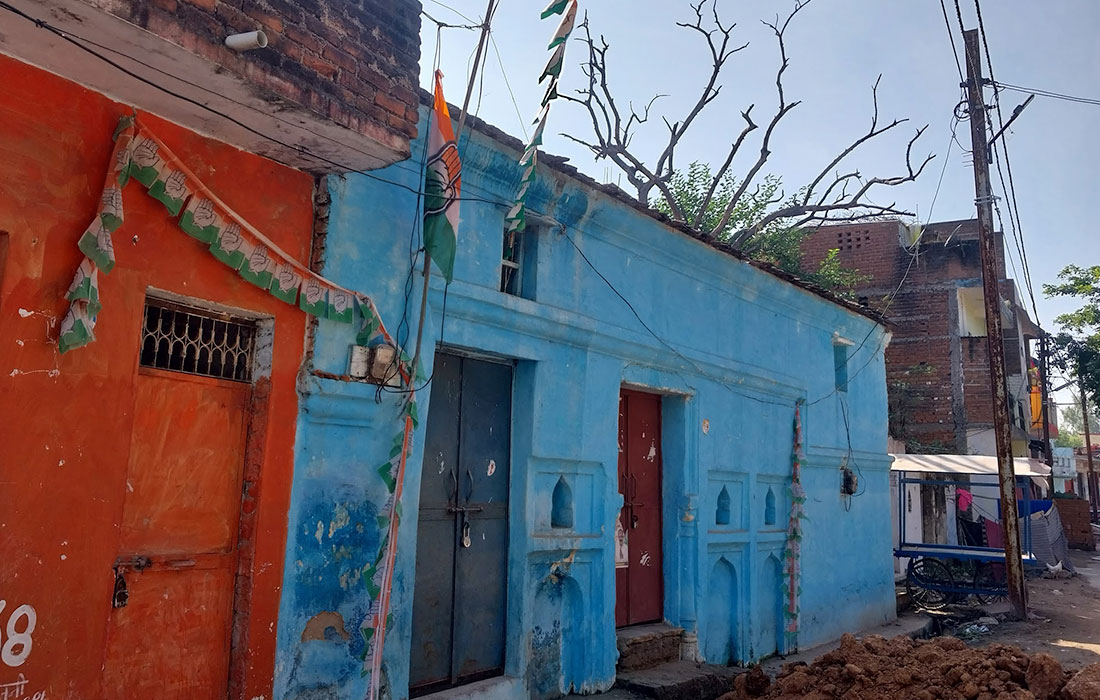Discovering the Timeless Charms of Khajuraho: Temples, Tradition, and Tranquility
Thu 18 Jan 2024
Khajuraho, a UNESCO world heritage site declared in 1986, is a bustling place, replete with a high dose of local color and flavor. In its dusty lanes and by-lanes where locals, tourists and animals often jostle for space and yet happily coexist, one comes up at times with remnants of a bygone era.
Forget the temples. Khajuraho’s old houses are also an attraction, bearing the unique Bundelkhandi stamp of ornate wooden doors called kiwad and bright hues on outer walls. Sometimes, the doors too are washed in bright shades like blue and even red.

In this slow pace of life where royalty still holds the sway, the rangolis made by women are a huge draw too. The rangolis are made during Diwali near the entrances of houses and even on roads, said a local woman Rajabai Raikwad.
“I used to make rangolis myself but now my daughter makes them during the festival. We use bright paints,” she said. Her daughter is a good artist, local resident Pradeep Sain acknowledged.
During an afternoon sojourn, the reporter spotted a beautiful rangoli at another house splashed in green with other contrasting hues. In most houses here women create whatever patterns they feel like, said resident Mahima Pushpekar. The rangoli’s creator, Varsha Barolia, was not present but her mother in-law gave her full credit. Varsha made this in just one day. Though most rangolis were made during the festival of light, a few were made on the occasion of G20. Apart from rangolis, wall murals dot the city. They were painted by artist Yogi Kumar.
At Purana Basti, just opposite the Brahma temple, lies Khajuraho’s oldest settlement, said resident Deepak Raikwad. His mother Kashibai, who must be in her 90s and fondly addressed to as dadiji by the reporter, sleeps on a slab on most winter afternoons.

Purana Basti is dotted with ancient figurines, many of which were unearthed while construction of houses took place. “It is the first settlement of Khajuraho and must be over 100 years old. My mother is about 95,” Raikwad said.
Some of the walls in Purana Basti also sport the Chiteri art famous across Bundelkhand. The art is made during weddings with images of Ganesha and kalash being common. But the most unique looking are the kiwads which were of great significance in the olden days. “The typical kiwad height is kept low. It means anyone entering a house has to bow down,” Raikwad informed.

In this somewhat crowded and noisy city where old meets the new and people come from all over the world, Pari Khan works as a street vendor serving chai, pooris and parathas to tourists. A local resident, Pari received training for over a month before starting her own venture.
The business helps her run the family though daily she has to pay Rs 10 per day to the Nagar Parishad. “There are many hotels here but they have fixed timings. Some pay low salaries. I like flexibility so that I can run to my house if needed,” said Pari, who is sometimes helped by her husband.

As dusk fell, the Pari’s voice was drowned in the cacophony as birds made for their nests. Shivsagar lake, which overlooks her thela, turned a beautiful shade of pink.

Deepanwita Gita Niyogi is a New Delhi-based independent journalist. She writes on many topics, including environment, gender, conservation and conflict.
Disclaimer: All views and opinions expressed in The Brew Opinion – our opinion section – are those of the authors and do not necessarily reflect the official policy or position of TheBrewNews.com, the company, or any of its members.
Also read: ‘World’s Coolest Winter’ puts UAE in top global touristic destination

 May 03 2024
May 03 2024












